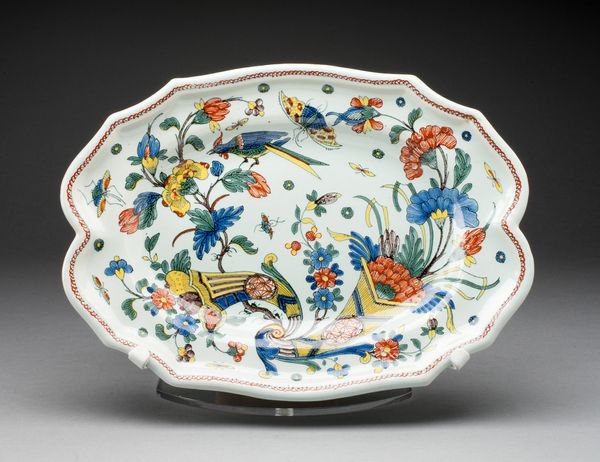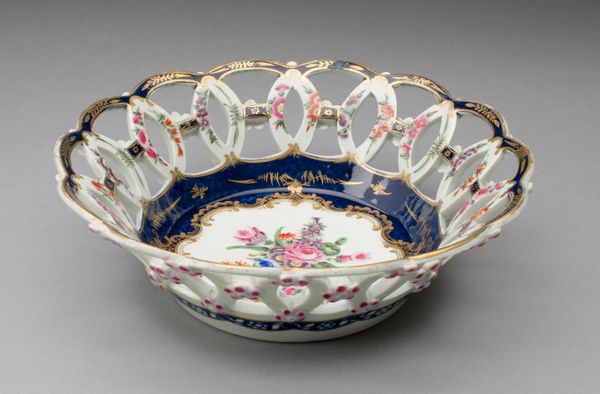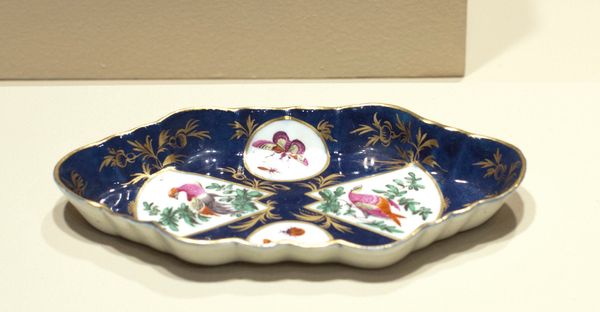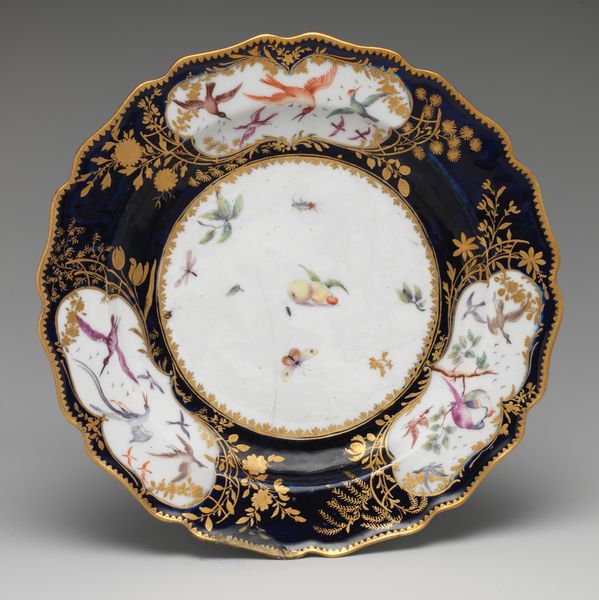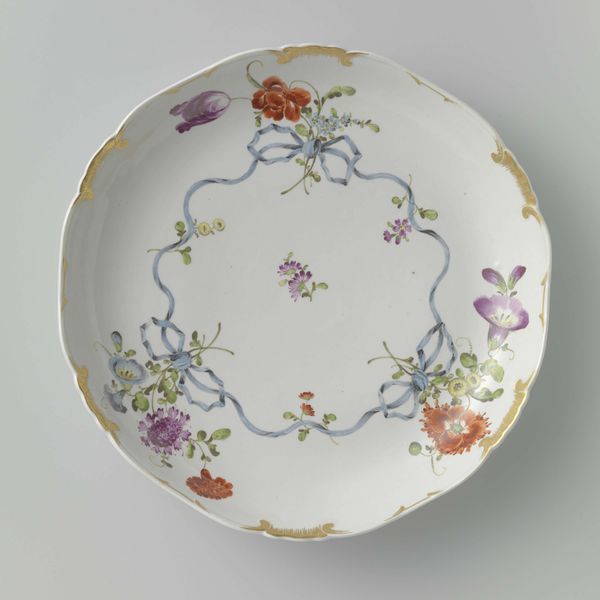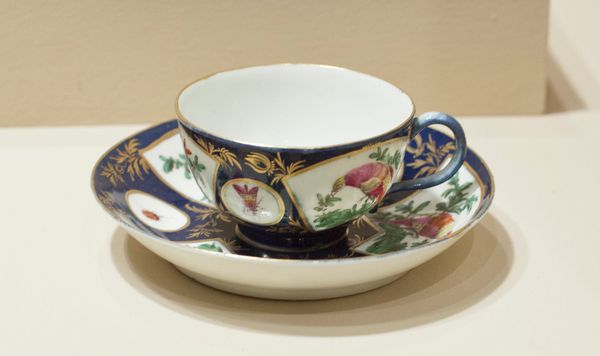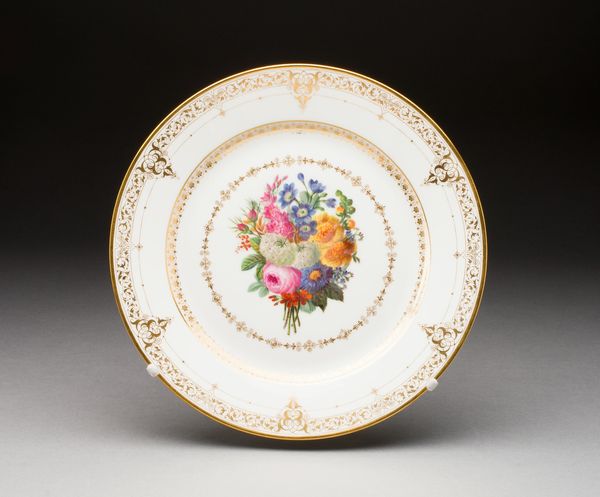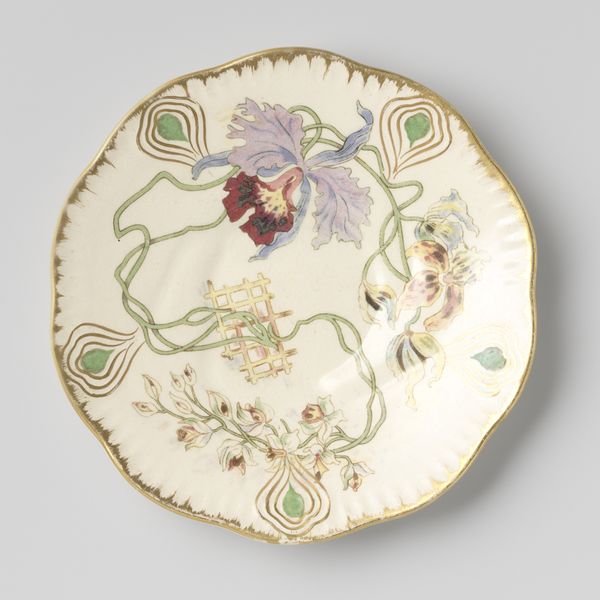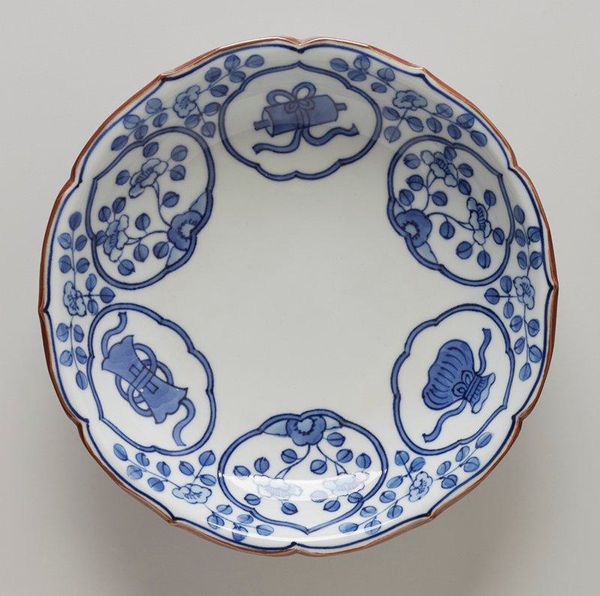
Round Dish 1765 - 1770
0:00
0:00
mixed-media, ceramic, porcelain
#
mixed-media
#
ceramic
#
porcelain
#
orientalism
#
ceramic
#
decorative-art
#
rococo
Dimensions: 1 1/4 x 7 1/16 in. (3.2 x 17.94 cm)
Copyright: Public Domain
Curator: Let’s turn our attention to this "Round Dish," crafted by the Worcester Porcelain Works around 1765-1770. The piece resides here at the Minneapolis Institute of Art. Its construction consists of porcelain and mixed media elements, showcasing a blend of decorative art and orientalism with definite rococo flourishes. Editor: My first thought? Dazzling. It's so busy, yet refined! That cobalt blue against the ornate gold detailing almost vibrates. I get this feeling it wants to escape, fly away like one of those delicate butterflies. Curator: Indeed. If we unpack its composition further, one might note how it balances radial symmetry with asymmetry in the detailing. Notice the central bird motif in contrast to the freely scattered butterflies. These choices introduce controlled variety. Editor: You’re right about that controlled feeling. It's not just a random jumble. Those cartouches containing the insects really focus your eye, pulling it along a specific path. Each one a little world. Like looking at precious jewels set into something far bigger. Curator: These details speak to a wider European fascination with Chinoiserie during the period, often reinterpreting Eastern motifs. But there is more, as porcelain served not only as a utilitarian object but equally as a display of wealth. The careful construction reflects broader cultural and economic dynamics. Editor: Right, this dish wasn’t just holding biscuits. This dish WAS the biscuit…the prize, the delightful indulgence itself! I can imagine the flutter it caused in a drawing-room, nestled amongst stiff silks and whispered secrets. Maybe it still has secrets, trapped inside its glazed surface? Curator: Perhaps, but the object's true value now lies not only in any historical gossip it might possess, but what it can still express: The intersections between design, desire, and cultural appropriation in eighteenth-century England. Editor: And me? I just adore those little butterflies, their tiny world. It brings back such a feeling of…nostalgia! A tangible link to dreams long past, yet vivid. A bit like glimpsing forever in a porcelain microcosm.
Comments
No comments
Be the first to comment and join the conversation on the ultimate creative platform.
